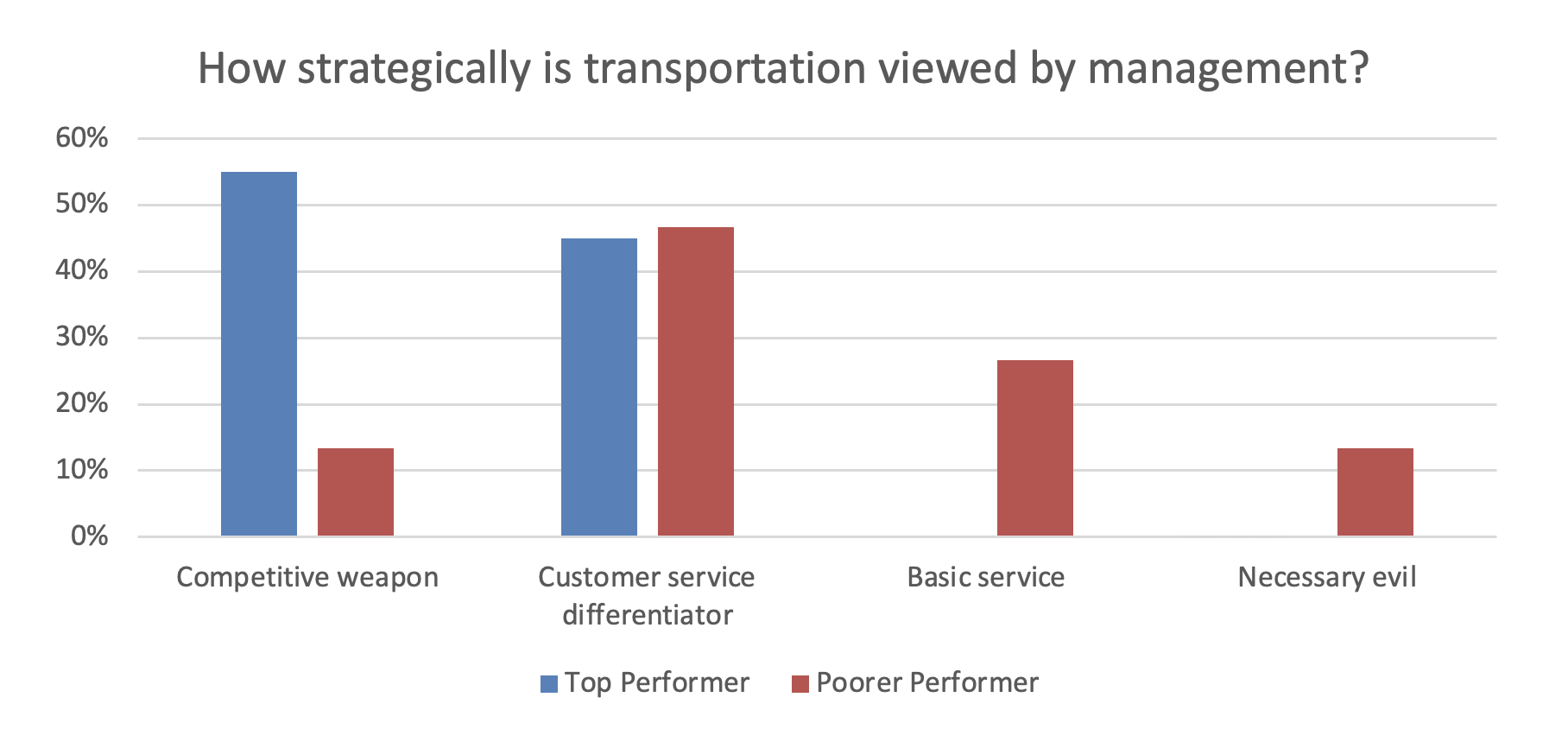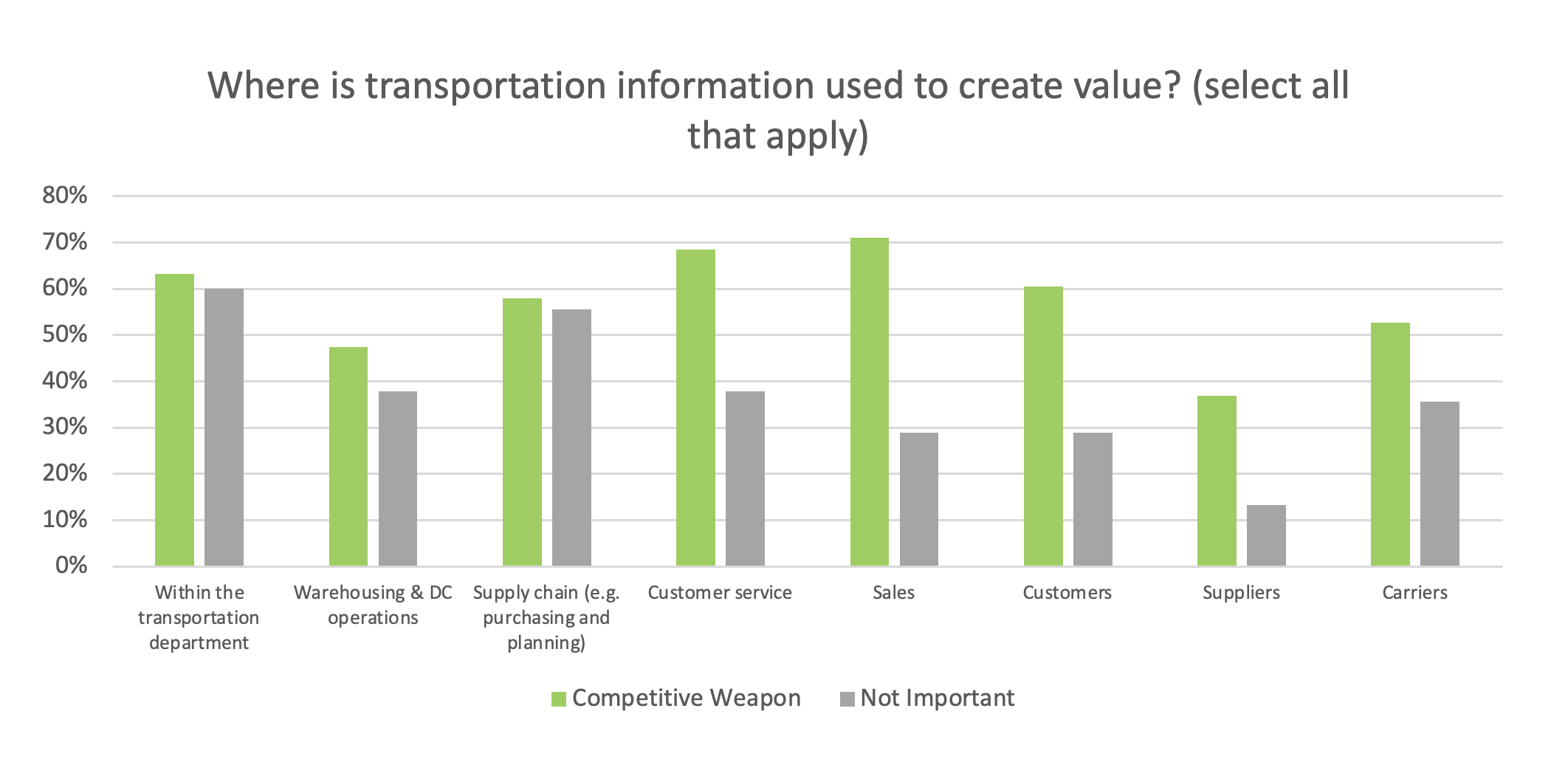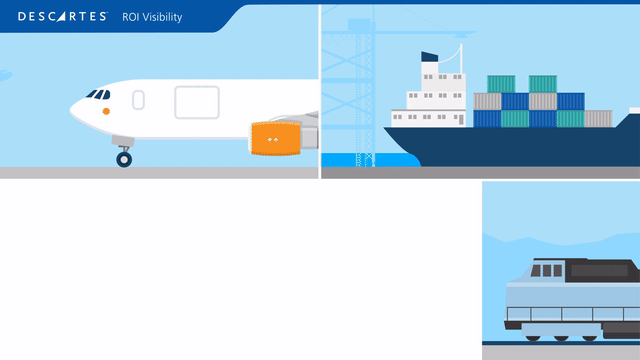Why is it that some companies get so much more business value from their transportation management strategies, tactics, and technology than everyone else?
For five years, Descartes has conducted the Global Transportation Management Benchmark Survey to help answer this essential question. Over time, the survey considers how the thinking of top financial performers diverges from bottom financial performers. In every survey, three habits have consistently distinguished top performers – even in the context of the pandemic. None are “rocket science,” but If your company isn’t following them, it’s missing out on the opportunity to have transportation management make a measurable impact on overall performance.
1. Management must believe transportation management is a competitive weapon. It’s very clear: those that don’t are poor financial performers (see Figure 1). Transportation is a critical component of the overall customer experience and, in so many markets, we have seen how industry leaders use it as part of their strategy for competitive differentiation. Transportation strategies, tactics, and technologies are not monolithic and best practices go well beyond getting a shipment from point A to point B for the lowest cost. If senior management doesn’t believe transportation management will make a difference, they will not support its use in the broadest sense, and its contribution to performance will fall to the lowest common denominator.
Figure 1: The impact of management’s strategic view on financial performance

Source: Descartes
2. Measure the full impact of transportation management to the enterprise. Leading transportation management strategies, tactics and technologies can significantly improve the performance of the enterprise in so many ways. I they aren’t measured, however, that understanding won’t make it to the “C-suite” and the first habit will never take hold. Unfortunately, too many transportation organizations stop measuring transportation value at basic customer service and cost. Top performers look at transportation management’s contribution beyond the supply chain organization and to its effect on revenue growth and competitive differentiation (see Figure 2). There is a fundamental shift in the thinking about transportation management in those who “own the customer” when they see how it helps drive more business.
Figure 2: Top performers do a significantly better job measuring overall transportation value

Source: Descartes
3. The value of transportation information transcends the enterprise. Analogous to the second habit, transportation information can be used across the enterprise and beyond to make a difference. It is easy to understand how transportation information can make DC operations more efficient and product allocation more effective. Transportation visibility has become a hot topic today because of the value it brings to sales and customer service. Even more important is the value of transportation information beyond the enterprise. Customers, suppliers and carriers can all benefit significantly from improved visibility of shipments, pickups and demand. Companies whose management believe that transportation management is a competitive weapon take this to heart and do a much better job at sharing transportation information (See Figure 3).
Figure 3: The value of transportation information goes beyond the enterprise

Source: Descartes
The value companies receive from transportation management is a self-fulfilling prophecy and virtuous cycle: get senior leadership to believe it is a strategic weapon, broadly measure its impact to reinforce that belief and expand visibility to create greater value.
In the 5th Global Transportation Management Benchmark Survey, we examine how top performers think differently about transportation management strategies, tactics and technology. We also evaluate the impact of the pandemic on that thinking and look at the importance of technology and where top performers are making their investments.
Join us for a deep dive into the benchmark results on our web seminar May 20th at 2pm Eastern Daylight Savings Time.


